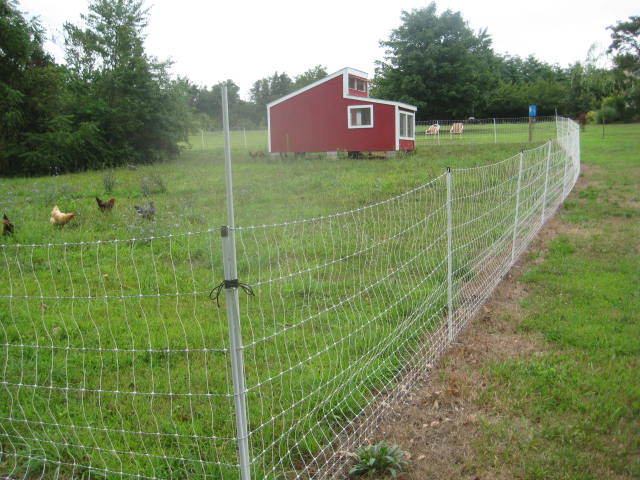organictoon
In the Brooder
- Jan 6, 2016
- 30
- 1
- 24
Alright, this will be my first post to the forums and I have found an INVALUABLE amount of information available to start my first chicken venture, so thanks to all previous and current members and the moderators for making this all possible. Now to my question:
I have just recently acquired 4 acres of land in Fort Worth Texas having said that my intentions are to start the Chickens first and here are my plans for review after research:
1. I am going to be utilizing a very well built structure that the previous owner was using for salt lick for her livestock which is 8ft Wide x 16ft Long:
- I will be doing 2x4's staggered ladder style for Roost space
- I would like to get as many chickens as possible in there (30 is the goal for happy chickens)
- I will be utilizing a trenching method around ALL sides burying the 1/4 inch hardware cloth about 12-16 inches deep for digging predators.
- The run will be 8W x 30L x 8ft H with 1x2 welded wire on top and 4 ft on the sides from the top with the bottom remaining 4 ft being 1/2 inch hardware cloth and the bottom trenched the same as COOP.
- I will utilize Hay for the bedding and drop boards under the roost initially for Poopies and later switch to chipped wood when funds provide for a decent chipper.
2. Now my question that remains is:
- I do intend on letting them free range during the day in my very LARGE backyard which has very secure 4 foot fences and tons of tree forage above to help with birds of prey (hawks present in sky commonly). The only issue is I have a distance of about 150 feet from my backyard to the COOP/Run and would like to know what is the best/economical and efficient way to transport the chickens that short of a distance? I feel like it would take forever for them to corral from the COOP/Run into a chicken tractor of any sort just to move them 150 feet.
Thanks for any advice or guidance on my plans in advance!
I have just recently acquired 4 acres of land in Fort Worth Texas having said that my intentions are to start the Chickens first and here are my plans for review after research:
1. I am going to be utilizing a very well built structure that the previous owner was using for salt lick for her livestock which is 8ft Wide x 16ft Long:
- I will be doing 2x4's staggered ladder style for Roost space
- I would like to get as many chickens as possible in there (30 is the goal for happy chickens)
- I will be utilizing a trenching method around ALL sides burying the 1/4 inch hardware cloth about 12-16 inches deep for digging predators.
- The run will be 8W x 30L x 8ft H with 1x2 welded wire on top and 4 ft on the sides from the top with the bottom remaining 4 ft being 1/2 inch hardware cloth and the bottom trenched the same as COOP.
- I will utilize Hay for the bedding and drop boards under the roost initially for Poopies and later switch to chipped wood when funds provide for a decent chipper.
2. Now my question that remains is:
- I do intend on letting them free range during the day in my very LARGE backyard which has very secure 4 foot fences and tons of tree forage above to help with birds of prey (hawks present in sky commonly). The only issue is I have a distance of about 150 feet from my backyard to the COOP/Run and would like to know what is the best/economical and efficient way to transport the chickens that short of a distance? I feel like it would take forever for them to corral from the COOP/Run into a chicken tractor of any sort just to move them 150 feet.
Thanks for any advice or guidance on my plans in advance!





